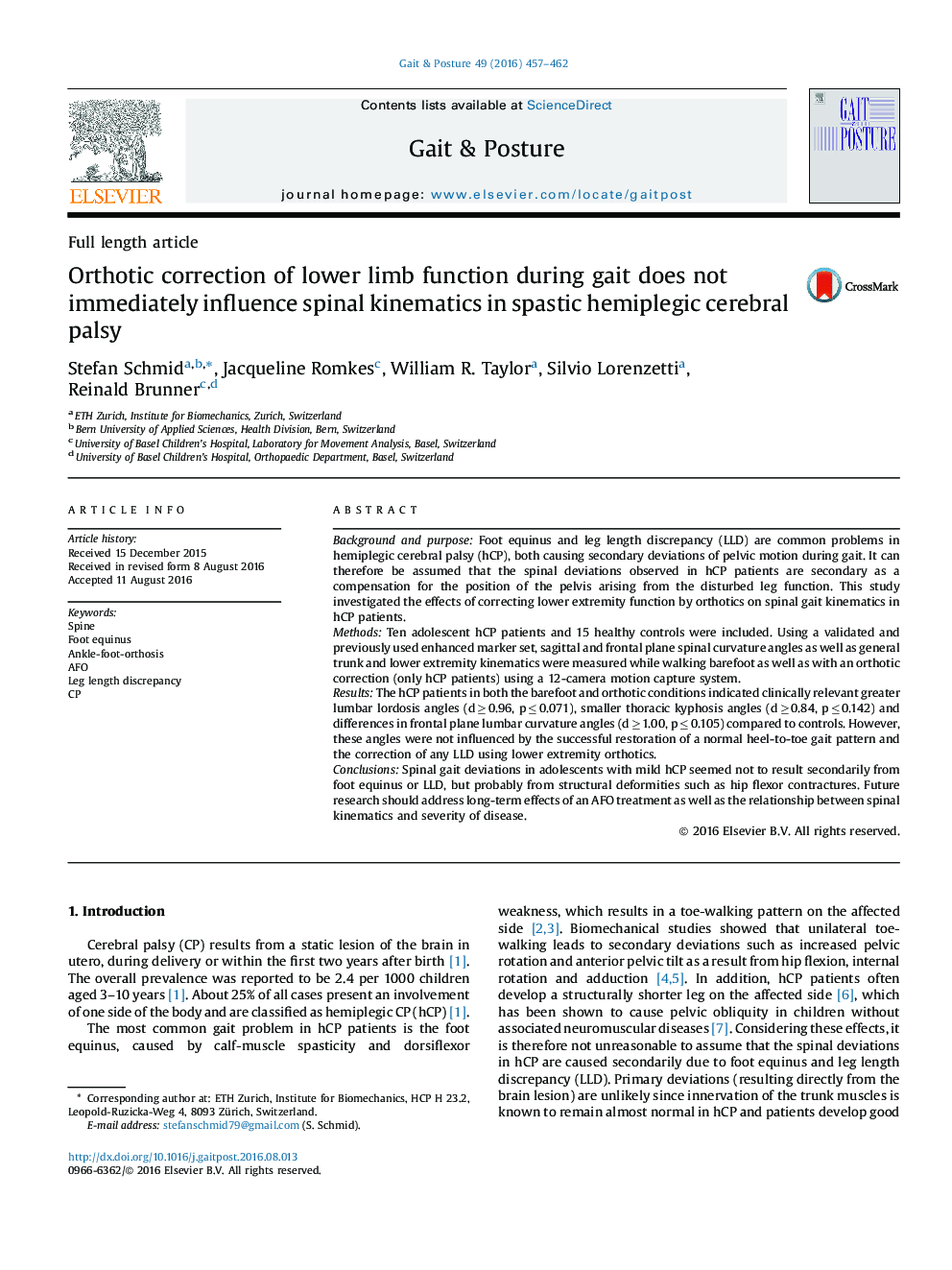| کد مقاله | کد نشریه | سال انتشار | مقاله انگلیسی | نسخه تمام متن |
|---|---|---|---|---|
| 6205525 | 1603846 | 2016 | 6 صفحه PDF | دانلود رایگان |

- Abnormalities in spinal kinematics could be identified in hemiplegic CP.
- Equinus foot seems not to influence spinal deviations in hemiplegic CP gait.
- Spinal deviations might be related to proximal structural deformities.
- Patients accustomed to orthoses might adapt their barefoot walking pattern.
- Extent of secondary effects might be dependent on severity of equinus foot.
Background and purposeFoot equinus and leg length discrepancy (LLD) are common problems in hemiplegic cerebral palsy (hCP), both causing secondary deviations of pelvic motion during gait. It can therefore be assumed that the spinal deviations observed in hCP patients are secondary as a compensation for the position of the pelvis arising from the disturbed leg function. This study investigated the effects of correcting lower extremity function by orthotics on spinal gait kinematics in hCP patients.MethodsTen adolescent hCP patients and 15 healthy controls were included. Using a validated and previously used enhanced marker set, sagittal and frontal plane spinal curvature angles as well as general trunk and lower extremity kinematics were measured while walking barefoot as well as with an orthotic correction (only hCP patients) using a 12-camera motion capture system.ResultsThe hCP patients in both the barefoot and orthotic conditions indicated clinically relevant greater lumbar lordosis angles (d â¥Â 0.96, p â¤Â 0.071), smaller thoracic kyphosis angles (d â¥Â 0.84, p â¤Â 0.142) and differences in frontal plane lumbar curvature angles (d â¥Â 1.00, p â¤Â 0.105) compared to controls. However, these angles were not influenced by the successful restoration of a normal heel-to-toe gait pattern and the correction of any LLD using lower extremity orthotics.ConclusionsSpinal gait deviations in adolescents with mild hCP seemed not to result secondarily from foot equinus or LLD, but probably from structural deformities such as hip flexor contractures. Future research should address long-term effects of an AFO treatment as well as the relationship between spinal kinematics and severity of disease.
Journal: Gait & Posture - Volume 49, September 2016, Pages 457-462